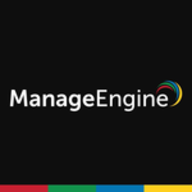


ManageEngine Endpoint Central and IBM MaaS360 compete in the endpoint management category. ManageEngine Endpoint Central has the upper hand for its pricing and customer support, while IBM MaaS360 stands out for its advanced features.
Features: ManageEngine Endpoint Central is known for its robust patch management, software deployment, and remote control capabilities. IBM MaaS360 features comprehensive security, BYOD support, and mobile expense management. IBM MaaS360's feature set is seen as more extensive, particularly for larger, security-focused enterprises.
Room for Improvement: ManageEngine Endpoint Central could enhance its reporting features and scalability. IBM MaaS360 users suggest improvements in navigation and better software integration. Integration issues are more frequently mentioned for IBM MaaS360.
Ease of Deployment and Customer Service: ManageEngine Endpoint Central is appreciated for a straightforward deployment process and responsive customer support. IBM MaaS360's deployment is more complex but has helpful documentation. IBM's customer service is sometimes seen as less responsive compared to ManageEngine Endpoint Central's
Pricing and ROI: ManageEngine Endpoint Central is noted for competitive pricing and good ROI, particularly for small to medium-sized businesses. IBM MaaS360, being more expensive, is considered worth the investment for its advanced features and security capabilities. Users seeking cost-efficiency lean towards ManageEngine, while those valuing extensive features tend towards IBM MaaS360.
Everything we've gained from it makes my job easier day after day, and I see value in it as an engineer.
Microsoft Intune not only saves costs by reducing the number of personnel needed but also offers a comprehensive solution for managing laptops, applications, security, individual access, and enrollment.
Importantly, when someone leaves the company, it helps protect document access on their devices.
When a support ticket is submitted, it directly reaches someone with Intune support expertise.
When I contacted Microsoft, they had the same expertise, if not more, which is phenomenal because I felt heard and my problem was solved.
Sometimes, the support provided is excellent, and the representative is knowledgeable, while other times, the service needs improvement.
IBM's support and technical service were helpful when needed.
The support team is available via chat and will create a ticket if they're not available, providing assistance even for small issues.
While they are generally good, there could be improvements in their response times to align with our SLAs.
The scalability of Microsoft Intune is ten out of ten.
Ideally, we want to automatically segregate devices based on user properties like primary use, but currently, dynamic groups seem limited to device properties.
It supports organizations with 200 endpoints and those with more than 15,000 endpoints.
We have not experienced downtime, bugs, or glitches.
It appears Microsoft Intune undergoes changes without informing customers.
Microsoft Intune has been very stable.
ManageEngine prefers not to display any information if it cannot be properly gathered.
The product is very stable, especially with the cloud version.
We haven't encountered issues very frequently.
Features like unlocking devices sometimes fail, and the support offered for other operating systems is insufficient.
There are communication issues, so you might start working with a feature without knowing if it will be deprecated six months from now.
Many third-party companies offer single-pane-of-glass reporting that shows you what your update environment looks like, how your patch is doing, application status, etc., but Intune's reporting is not intuitive.
It would be great if there was a smarter solution to address this issue.
Endpoint Central does not support Linux, which makes it challenging to patch Linux machines using commands.
The patch management module could be simplified as it is currently a bit complicated.
Introductory professional services, like a fast-track service, were included with our E5 membership, and there have been no additional costs.
The Intune suite and add-ons, such as batch management and remote help, are costly.
It costs approximately forty euros per user per month.
The pricing and licensing experience with IBM MaaS360 was satisfactory and not expensive.
ManageEngine products offer reasonable prices for their product quality.
The pricing is cheaper compared to other MDM products.
The pricing of ManageEngine Endpoint Central is quite decent.
Intune excels in configuration and compliance management for Windows 10, ensuring devices receive timely updates and adhere to organizational standards.
Dynamic groups allow us to set conditions for automatic membership, eliminating the need for user intervention or manual review and ensuring a seamless workflow.
Windows Autopatch is the most valuable because it removes the burden of patch management.
The main benefit of IBM MaaS360 is phone control and rollout.
ManageEngine Endpoint Central is straightforward to use and implement.
ManageEngine Endpoint Central has significantly simplified my device management practices.
The GUI of Endpoint Central is very user-friendly, which simplifies the process of training new users.
| Product | Market Share (%) |
|---|---|
| Microsoft Intune | 31.3% |
| ManageEngine Endpoint Central | 7.3% |
| IBM MaaS360 | 4.8% |
| Other | 56.6% |



| Company Size | Count |
|---|---|
| Small Business | 116 |
| Midsize Enterprise | 46 |
| Large Enterprise | 152 |
| Company Size | Count |
|---|---|
| Small Business | 20 |
| Midsize Enterprise | 7 |
| Large Enterprise | 12 |
| Company Size | Count |
|---|---|
| Small Business | 25 |
| Midsize Enterprise | 14 |
| Large Enterprise | 35 |
Microsoft Intune provides centralized management of mobile devices and applications, ensuring security, compliance, and productivity through integration with Microsoft services like Microsoft 365 and Azure Active Directory.
Organizations use Intune for managing mobile devices and applications, enhancing security and compliance across platforms. With features like single sign-on, conditional access, and zero-touch deployment via Autopilot, it facilitates efficient operations. Intune's scalability, easy enrollment, and capabilities such as remote wipe support diverse device management, offering robust data protection and efficient operation. Despite its features, improvement areas include reporting, compatibility with non-Microsoft devices, and better support for macOS and Linux devices.
What are the key features of Microsoft Intune?
What benefits should users look for in reviews?
In industries such as finance, healthcare, and education, Microsoft Intune is implemented to ensure secure and compliant device management. Companies leverage its capabilities to deploy security policies and manage both corporate-owned and BYOD environments, facilitating a unified approach to data protection and compliance.
IBM MaaS360 is an EMM solution that allows you to configure devices for enterprise access and protect corporate data on smartphones and tablets – all from a single screen. As a robust integrated cloud platform, MaaS360 simplifies mobile device management (MDM) with visibility, rapid deployment, and control that spans across apps, mobile devices, and data. It also secures apps, laptops, smartphones, tablets, wearables, desktops, the Internet of Things (IoT) devices, and data so you can rapidly scale your remote workforce and bring your own device (BYOD) initiatives.
IBM MaaS360 can help you build a zero-trust strategy with modern device management. Deployment is so fast that in just a few clicks, IT admins can start enrolling devices and quickly manage the entire mobile device lifecycle. They can do everything from enrollment to enterprise integration, support, configuration and management, monitoring and security, analytics, and reporting.
IBM MaaS360 Features
IBM MaaS360 has many valuable key features. Some of the most useful ones include:
IBM MaaS360 Benefits
There are many benefits to implementing IBM MaaS360. Some of the biggest advantages the solution offers include:
Reviews from Real Users
MaaS360 stands out among its competitors for a number of reasons. Some of these include its mobile device and laptop management, robust security, and complete sync with Active Directory. PeerSpot users take note of the advantages of these features in their reviews:
Claudia G., a Cybersecurity Consultant at Telefónica, mentions, “My customers value the ability to control all their devices from a central point in IBM MaaS360. I rate IBM MaaS360 a nine out of ten.”
Okoro A.., a CEO at a ITANDT Solutions Limited notes, “The most valuable features are mobile device management and security (which allows you to quarantine infected devices).”
ManageEngine Endpoint Central is a unified endpoint management (UEM) solution offered by ManageEngine, a division of Zoho Corporation. It is designed to help organizations efficiently manage and secure their endpoints from a centralized platform. Endpoint Central provides a comprehensive set of features and capabilities to streamline endpoint management and enhance security across diverse devices and operating systems.
ManageEngine Endpoint Central Features:
ManageEngine Endpoint Central Benefits:
Reviews from Real Users
PeerSpot user, Sr Engineer Administrator at a university, says that "Its cross-platform capabilities and the ability to do both OS-level patching and third-party patching are valuable. It is difficult to find a software product that will do all that for you out of the box, and you don't have to do any configuration other than your initial setup. Once you do that, there is a very minimalistic approach to getting it operational. You can have it up and running within a 20-minute time span."
Park Armstrong, Chief Technical and Solution Architect at Vertigo Inc., writes that ManageEngine Endpoint Central is “Helpful for identifying and filling the gaps and meeting compliance needs, but each of their product works as an independent product and lacks integration”.
We monitor all Enterprise Mobility Management (EMM) reviews to prevent fraudulent reviews and keep review quality high. We do not post reviews by company employees or direct competitors. We validate each review for authenticity via cross-reference with LinkedIn, and personal follow-up with the reviewer when necessary.